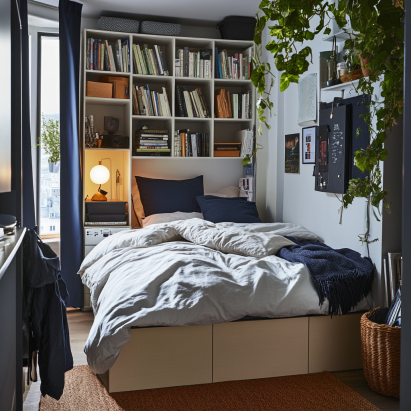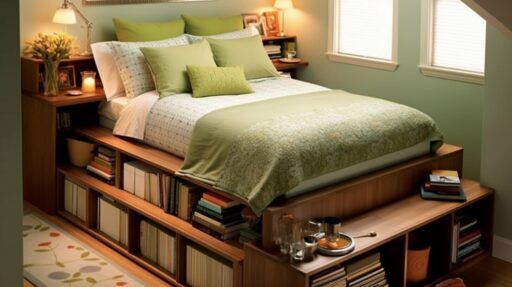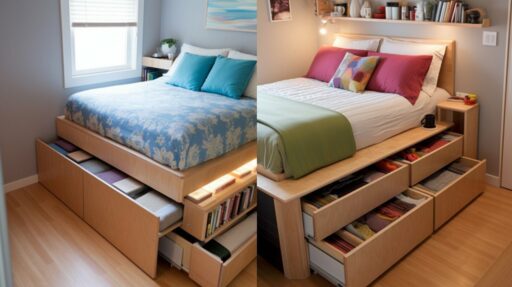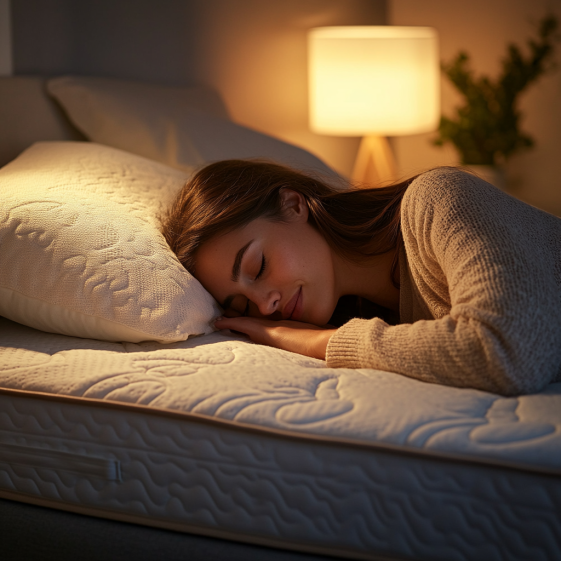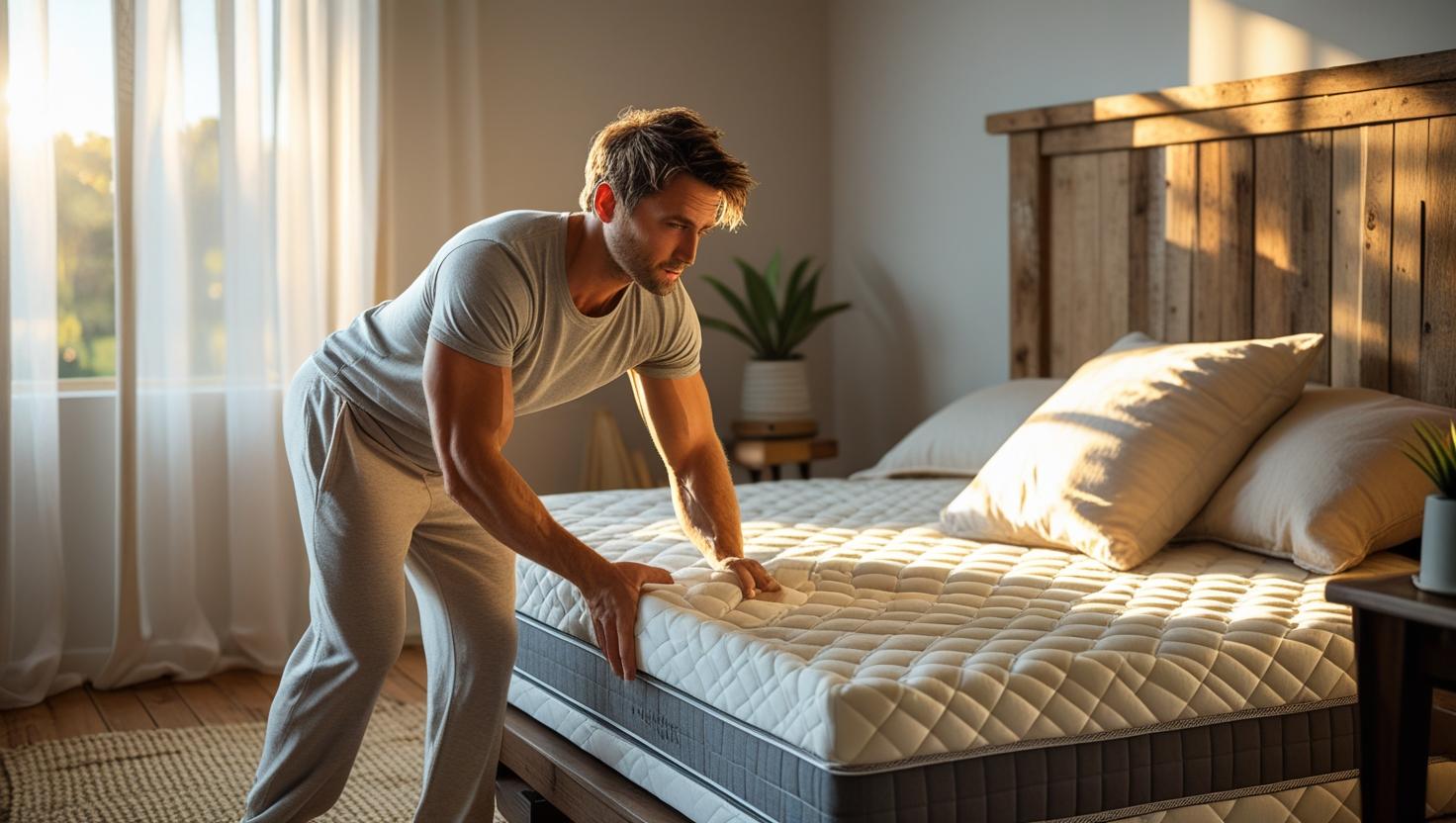Nighttime Routine: How to Fall Asleep Faster & Wake Refreshed
Brightened Intro
A nighttime routine trains your body and brain to switch into sleep mode. Start with 3–5 simple steps (dim lights, unplug from screens, relax your body, and wind down with calm rituals) and you can fall asleep faster within days—often by the very first week.
Key Takeaways on Nighttime Routine
- Keep a consistent nighttime routine to reinforce your circadian rhythm.
- Dim lights and avoid blue light 60–90 minutes before bed to protect melatonin.
- Use relaxation (breathing, stretching, warm bath) to lower cortisol and calm the mind.
- Cool bedroom (60–67°F / 16–19°C) plus breathable bedding improves sleep quality.
- Make it enjoyable: pair tea, journaling, or light reading to ease the transition.
- Stick with it nightly for 2+ weeks for durable, effortless sleep.
Do you find yourself tossing and turning at night, unable to fall asleep quickly? A consistent nighttime routine might be the missing piece. Your body thrives on habit and rhythm, and a structured pre-bed routine trains your brain to recognize when it’s time to sleep.
In this guide, we’ll explore how a nighttime routine improves sleep, the best habits to include, and step-by-step strategies to help you fall asleep faster and wake up more refreshed.
Why a Nighttime Routine is Essential for Quality Sleep
Answer first: A consistent evening routine helps regulate your circadian rhythm by preparing your brain and body for sleep, so you fall asleep faster and wake fewer times overnight.
Your body has an internal clock (circadian rhythm) that signals when it’s time to be awake and when to wind down. A consistent evening routine helps regulate this rhythm by preparing your brain and body for sleep.
The Benefits of a Nighttime Routine:
✅ Reduces stress & anxiety – Helps calm racing thoughts before bed.
✅ Increases melatonin production – Supports a natural sleep cycle.
✅ Prevents sleep disruptions – Reduces nighttime wake-ups.
✅ Helps you fall asleep faster – Establishes a reliable signal for sleep.
⏳ Read More: The Ultimate Sleep Hack
The Best Nighttime Habits for Better Sleep
Answer first: Layer a few science-backed habits—light control, device curfew, body relaxation, and a cool bedroom—to get the biggest payoff with minimal effort.
1. Dim the Lights 60–90 Minutes Before Bed
💡 Why? Artificial light, especially blue light, suppresses melatonin and delays sleep.
💡 How? Use warm-toned lighting, candles, or Himalayan salt lamps to create a relaxing atmosphere.
2. Avoid Screens & Blue Light Exposure
📱 Why? Blue light from phones and TVs tricks your brain into thinking it’s still daytime.
📱 How? Use blue light filters, wear blue light-blocking glasses, or stop screen use 1 hour before bed.
🔵 Read More: How Sleep Science & Technology Can Help
3. Take a Warm Bath or Shower
🛁 Why? Helps lower your body temperature, signaling to your brain that it’s time for sleep.
🛁 How? Take a bath 90 minutes before bed to maximize relaxation benefits.
4. Practice Relaxation Techniques (Meditation, Deep Breathing, or Stretching)
🧘 Why? Reduces cortisol levels and promotes deep relaxation.
🧘 How? Try the 4-7-8 breathing technique, progressive muscle relaxation, or bedtime yoga.
🧘 Read More: Sleep Like a Pro
5. Read a Book (But Avoid Thrillers!)
📖 Why? Reading a physical book (not an e-book) helps your brain transition into sleep mode.
📖 How? Choose a light, enjoyable book rather than something too stimulating.
6. Drink a Sleep-Boosting Herbal Tea
🍵 Why? Herbal teas like chamomile, valerian root, and lemon balm promote relaxation.
🍵 How? Drink your tea 30 minutes before bed for best results.
🍵 Read More: 10 Sleep Hacks to Try Tonight
7. Keep a Gratitude or Sleep Journal
📓 Why? Writing down thoughts helps clear your mind and reduces bedtime anxiety.
📓 How? Write down three things you’re grateful for or a short reflection on your day.
8. Set Your Room to the Ideal Sleep Temperature
🌡️ Why? A cool room (60–67°F or 16–19°C) helps regulate melatonin and improve sleep quality.
🌡️ How? Use breathable bedding, a fan, or adjust your thermostat.
🌙 Read More: Genius Sleep Fixes
How to Create Your Personalized Nighttime Routine
Answer first: Build a 30–60 minute sequence of 3–5 steps you’ll actually stick with, then repeat it nightly at the same time.
A successful nighttime routine doesn’t have to be long or complicated. Start with a simple 3–5 step process that works for you.
Example Nighttime Routine (30–60 Minutes Before Bed)
🕰️ 9:00 PM – Dim the lights & reduce screen time.
🛁 9:15 PM – Take a warm shower or practice deep breathing.
📖 9:30 PM – Read a book or journal to clear your mind.
🍵 9:45 PM – Sip herbal tea while relaxing in bed.
😴 10:00 PM – Lights out, sleep time!
🔄 Read More: Why You Should Never Hit the Snooze Button
How Long Does It Take for a Nighttime Routine to Work?
Answer first: Many people feel improvements in a few nights, but consistency over 2–4 weeks locks in lasting results.
Most people see improvements in their sleep within a few nights of following a nighttime routine. However, for long-term benefits, consistency is key.
Timeline for Sleep Improvement:
📅 Week 1: You may still wake up at night but fall asleep faster.
📅 Week 2: Your sleep will feel deeper, and you’ll wake up more refreshed.
📅 Week 3–4: Your circadian rhythm fully adjusts, making sleep effortless.
⏳ Read More: Say Goodbye to Insomnia
FAQ
Quick answers to common questions about building a nighttime routine.
- What is the best time to start a nighttime routine?
- Begin 60–90 minutes before your target bedtime. Keeping this timing consistent helps your brain associate the sequence with sleep.
- Can a nighttime routine help with insomnia?
- Yes. While it’s not a cure for clinical insomnia, a predictable wind‑down reduces arousal, supports melatonin, and often shortens sleep onset latency.
- Do I need to follow the same nighttime routine on weekends?
- As closely as possible. A similar schedule on weekends prevents circadian drift and Monday “social jet lag.”
- What if I can’t avoid screens before my nighttime routine?
- Use blue-light reduction settings, enable dark modes, wear blue-light filtering glasses, and keep screens at the lowest brightness.
Final Thoughts: Stick to Your Nighttime Routine & Sleep Better Tonight
Creating a consistent nighttime routine is one of the best ways to fall asleep faster, reduce stress, and wake up feeling fully rested. Even small changes—like dimming the lights, avoiding screens, and practicing relaxation techniques—can make a big difference.
✅ Start with 3–5 simple steps that you enjoy.
✅ Stay consistent for at least two weeks to see results.
✅ Customize your routine to fit your lifestyle & needs.
🌙 Try it tonight and wake up feeling refreshed tomorrow! 😴✨
Related reading from Cozy Bed Quarters
- How a Nighttime Routine Helps You Sleep Faster & Wake Up Refreshed
- 10 Proven Sleep Hacks for Falling Asleep Faster – #7 Will Surprise You!
- Bedtime Rituals for Improved Sleep
Other reading we found popular


